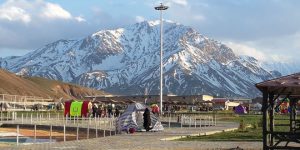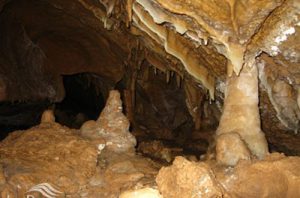
The history of Marand relates to centuries BC. It has been declared in Encyclopaedia of Islam that Marand was living place of important tribes of Chaldea and Assur. Ptolemy, Greco-Roman geographer who lived two centuries BC, named this town as Mandegarna. According to historians, Marand in the Armenian language means burial and it is said that was the burial place of Noah. According to what William Jackson declared, Marand was Vaspurakan’s Capital in Sasanian Empire and the existence of a fire temple on Khakestari Hill is its evidence.
In William Jackson’s travel literature, the fact that Marand structure was built by the command of a girl named Maria was declared. She built a big church there which is used now as a mosque. So the city was named Mariana and then changed to Marind, Marvand, Marianeh, and then Marand. Others believed that etymology of Marand name was Madvand and Marand which means Medes living place. Some parts of the church still remain and have lots of big and small crosses all around its top. In other words, Maran or Marand or Madvand was once capital of Medes government.
The historical evidence indicates that Marand was Babak Khorramdin’s territory and Mohammad Rawadi obeys him till Babak Khoramdin Rebellion.
After Rawadid dynasty, Marand was no longer famous but traces show that the extension of the district to Nakhjavan, Iravan, Teflis, Shiravan, Shamakhi, Khoy, and Van was war battle of Azerbaijan, Gorjestan, and Armenia from one side and king’s mailers from the other side.
After the Mongol attacks, Ilkhanate system of governing has been established. Ilkhanate kings govern Maraqeh, Tabriz, and Soltanieh. From Teimourian Dynasty on Marand like other cities had been destroyed and looted. In Safavid Dynasty especially Ismail I when Iran had been defeated in Chaldoran War. The entire cities of Azerbaijan had been repositioned by the Ottoman Empire and Marand was also among them. It was destroyed and looted even more, due to its strategic and special position.
In Shah Abbas Dynasty, Marand was ruled by Soltan Jamshid Khan Donboli and was taken as his government capital. In 1016 AH, Shah Abbas chose Marand as his military base for war against Ottoman Empire. In Qajar Dynasty, the city got famous due to insudterial, business and mining activities development, bartering between Tabriz, Khoy, Baku, and Teflis, migration and travel to Russsia, its way for caravan travel. In Persian Constitutional Revolution, Shoja Nezam Marandi in Marand, Zenouz, Alamdar, and GorGor rebel against Persian Constitutional. In this time, Marand was Iran business way to Europe and Russia and was important for providing living supply. This road was blocked several times by Shoja Nezam Marandi soldiers. He was killed by a bomb which has been posted by Heidar Amu Oqli, member of constitutionalism, from Tabriz. Freedom fighters of Marand were always in Satarkhan’s side during the Constitutional Revolution.
- Please feel free to call us on 00989020038045 (Phone, Whatsapp, Telegram) or contact by info@mustseeiran.com, if you require any further information.
Follow us on Instagram @mustseeiran.com_insta
